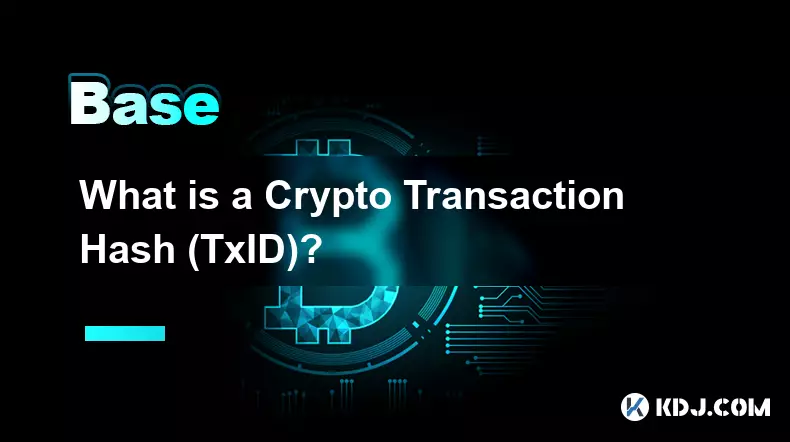-
 Bitcoin
Bitcoin $111100
0.49% -
 Ethereum
Ethereum $4304
0.21% -
 XRP
XRP $2.888
2.36% -
 Tether USDt
Tether USDt $0.9999
-0.03% -
 BNB
BNB $879.1
1.62% -
 Solana
Solana $207.9
2.67% -
 USDC
USDC $0.9998
-0.01% -
 Dogecoin
Dogecoin $0.2320
7.05% -
 TRON
TRON $0.3306
0.59% -
 Cardano
Cardano $0.8407
1.68% -
 Hyperliquid
Hyperliquid $48.50
3.55% -
 Chainlink
Chainlink $22.52
0.46% -
 Ethena USDe
Ethena USDe $1.001
-0.02% -
 Sui
Sui $3.395
0.74% -
 Bitcoin Cash
Bitcoin Cash $602.5
0.82% -
 Stellar
Stellar $0.3645
1.67% -
 Avalanche
Avalanche $24.82
0.93% -
 Hedera
Hedera $0.2211
0.99% -
 UNUS SED LEO
UNUS SED LEO $9.606
0.00% -
 Cronos
Cronos $0.2583
-2.44% -
 Litecoin
Litecoin $113.7
0.82% -
 Toncoin
Toncoin $3.094
0.39% -
 Shiba Inu
Shiba Inu $0.00001254
1.50% -
 Polkadot
Polkadot $4.040
4.96% -
 Uniswap
Uniswap $9.429
0.08% -
 Dai
Dai $0.9999
-0.01% -
 Ethena
Ethena $0.7629
3.04% -
 World Liberty Financial
World Liberty Financial $0.2111
-13.16% -
 Monero
Monero $269.9
0.50% -
 Aave
Aave $300.9
-0.41%
What is a "crypto faucet"?
Crypto faucets dispense small amounts of cryptocurrency for simple tasks, helping newcomers explore digital currencies with minimal risk.
Sep 02, 2025 at 07:37 pm

Understanding the Concept of a Crypto Faucet
1. A crypto faucet is a digital platform or website that dispenses small amounts of cryptocurrency to users for completing simple tasks. These tasks often include solving captchas, viewing advertisements, or clicking on links. The primary purpose of a faucet is to introduce new users to a particular cryptocurrency by allowing them to acquire tiny fractions without financial investment.
2. The concept originated with Bitcoin in the early 2010s when developers wanted to promote wider adoption. By offering free satoshis—tiny units of Bitcoin—they encouraged people to explore wallets, transactions, and blockchain technology firsthand. This hands-on experience helped demystify digital currencies for many beginners.
3. Over time, other cryptocurrencies adopted the faucet model as a marketing and distribution strategy. Altcoins use faucets to increase visibility and drive traffic to their networks. Some projects integrate faucets into broader ecosystems, where users can accumulate tokens before participating in decentralized applications or exchanges.
4. While the rewards from a single faucet session are minuscule, consistent engagement can accumulate over time. Users often combine faucet earnings with other passive income methods like staking or airdrops. However, the value of these micro-rewards depends heavily on market conditions and the specific cryptocurrency involved.
5. Many faucets operate on an automated reward system powered by smart contracts or backend scripts. These systems ensure transparency and prevent abuse by limiting how frequently a user can claim. Some platforms also require users to verify their identity or complete progressive challenges to receive payouts.
How Crypto Faucets Generate Revenue
1. The sustainability of a crypto faucet relies on revenue generated from advertisements. Advertisers pay faucet operators to display banners, pop-ups, or video ads that users must interact with before claiming rewards. This creates a cycle where user attention translates into income for the platform.
2. Some faucets partner with blockchain projects seeking exposure. In exchange for promoting a new token, the faucet receives a portion of the supply to distribute. This benefits both parties: the project gains traction, and the faucet acquires assets to reward users without direct cost.
3. Advanced faucets integrate gamification elements such as lotteries, dice rolls, or timed challenges. These features increase user engagement and allow operators to adjust payout probabilities, ensuring long-term profitability while maintaining user interest.
4. A portion of the collected fees from microtransactions or withdrawal thresholds may also contribute to operational costs. For example, some faucets only allow withdrawals after reaching a minimum balance, during which time the held funds can be used for liquidity or interest-generating activities.
5. Operators must carefully balance payout rates and ad income to remain profitable without discouraging participation. High withdrawal thresholds or excessive ads can drive users away, undermining the faucet’s effectiveness as a promotional tool.
Risks and Limitations of Using Crypto Faucets
1. One major concern is the prevalence of fraudulent or scam-based faucets. These platforms may promise rewards but never deliver, or they may harvest personal data under the guise of registration. Users should verify a faucet’s reputation through community reviews and blockchain transaction records.
2. The time investment required often outweighs the monetary return. Earning even a fraction of a dollar can take hours of repetitive actions, making faucets inefficient compared to other earning methods in the crypto space.
3. Phishing attempts are common on poorly secured faucet sites. Malicious scripts may attempt to steal wallet credentials or seed phrases, especially if users are prompted to enter sensitive information beyond basic account setup.
4. Network congestion and high gas fees can delay withdrawals or make them impractical. If the cost of transferring accumulated tokens exceeds their value, users effectively lose their earnings. This issue is particularly relevant on Ethereum-based faucets during peak usage periods.
5. Regulatory scrutiny may affect faucet operations in certain jurisdictions. Authorities might classify token distributions as unregistered securities offerings, leading to shutdowns or legal action against operators who fail to comply with local laws.
Frequently Asked Questions
What types of tasks are typically required on a crypto faucet?Users are usually asked to solve captchas, watch short video ads, complete surveys, or play mini-games. Some faucets also offer bonus rewards for referring new users or maintaining daily login streaks.
Can I make a significant income from crypto faucets?No, the earnings are extremely limited. Most faucets distribute fractions of a cent per task. While accumulation is possible, the income is negligible compared to active trading, staking, or development work in the blockchain industry.
Are crypto faucets safe to use?Reputable faucets with transparent withdrawal histories and secure interfaces are generally safe. However, users should avoid entering private keys, use disposable email addresses, and employ ad blockers or script filters to reduce exposure to malicious content.
Do all cryptocurrencies have faucets?Not all do, but major ones like Bitcoin, Ethereum, and popular altcoins such as Litecoin or Binance Coin often have active faucet systems. Newer or privacy-focused coins may avoid them due to concerns about spam or misuse.
Disclaimer:info@kdj.com
The information provided is not trading advice. kdj.com does not assume any responsibility for any investments made based on the information provided in this article. Cryptocurrencies are highly volatile and it is highly recommended that you invest with caution after thorough research!
If you believe that the content used on this website infringes your copyright, please contact us immediately (info@kdj.com) and we will delete it promptly.
- BlockchainFX, Bitcoin Hyper, and Little Pepe: Which Presale is the Real Deal?
- 2025-09-08 22:30:12
- Somnia Price Rally: Why This Cryptocurrency Is Surging
- 2025-09-08 22:30:12
- BlockchainFX: The Trading App with 1000x Potential?
- 2025-09-08 22:30:13
- BlockchainFX, Altcoins, and 2025 Growth: A NYC Perspective
- 2025-09-08 22:30:13
- Bitcoin, BlockchainFX Presale, and the Blockchain Revolution: What's Next?
- 2025-09-08 22:35:15
- Justin Sun, Crypto Regulation, and Investment Opportunities: A NYC Perspective
- 2025-09-08 22:35:15
Related knowledge

What is slippage in crypto?
Sep 08,2025 at 08:55pm
Understanding Slippage in Cryptocurrency Trading1. Slippage refers to the difference between the expected price of a trade and the actual price at whi...

How do you buy cryptocurrency?
Sep 08,2025 at 07:54pm
Understanding the Basics of Cryptocurrency Purchases1. To buy cryptocurrency, you must first choose a reliable digital currency exchange. Platforms li...

What is a Crypto Transaction Hash (TxID)?
Sep 07,2025 at 01:18pm
Understanding the Role of a Crypto Transaction Hash1. A crypto transaction hash, often referred to as TxID, is a unique identifier generated when a tr...

What is On-Chain and Off-Chain Data?
Sep 07,2025 at 04:55pm
Understanding On-Chain Data1. On-chain data refers to all information that is recorded directly on a blockchain. Every transaction, smart contract exe...

What is a Testnet vs. a Mainnet?
Sep 08,2025 at 05:55am
Understanding the Core Differences Between Testnet and Mainnet1. A Testnet is a parallel blockchain network used exclusively for testing purposes. Dev...

How to do Your Own Research (DYOR) in Crypto?
Sep 08,2025 at 08:00am
Understanding the Foundations of Crypto Projects1. Every cryptocurrency project starts with a foundational whitepaper. This document outlines the tech...

What is slippage in crypto?
Sep 08,2025 at 08:55pm
Understanding Slippage in Cryptocurrency Trading1. Slippage refers to the difference between the expected price of a trade and the actual price at whi...

How do you buy cryptocurrency?
Sep 08,2025 at 07:54pm
Understanding the Basics of Cryptocurrency Purchases1. To buy cryptocurrency, you must first choose a reliable digital currency exchange. Platforms li...

What is a Crypto Transaction Hash (TxID)?
Sep 07,2025 at 01:18pm
Understanding the Role of a Crypto Transaction Hash1. A crypto transaction hash, often referred to as TxID, is a unique identifier generated when a tr...

What is On-Chain and Off-Chain Data?
Sep 07,2025 at 04:55pm
Understanding On-Chain Data1. On-chain data refers to all information that is recorded directly on a blockchain. Every transaction, smart contract exe...

What is a Testnet vs. a Mainnet?
Sep 08,2025 at 05:55am
Understanding the Core Differences Between Testnet and Mainnet1. A Testnet is a parallel blockchain network used exclusively for testing purposes. Dev...

How to do Your Own Research (DYOR) in Crypto?
Sep 08,2025 at 08:00am
Understanding the Foundations of Crypto Projects1. Every cryptocurrency project starts with a foundational whitepaper. This document outlines the tech...
See all articles

























![[Pycoin] PI Coin -US President (Trump) Declaration ?? !! 'US' runs first. / Paikoin mining speed acceleration [Pycoin] PI Coin -US President (Trump) Declaration ?? !! 'US' runs first. / Paikoin mining speed acceleration](/uploads/2025/09/08/cryptocurrencies-news/videos/pycoin-pi-coin-president-trump-declaration-runs-paikoin-mining-speed-acceleration/68bed38c01e7a_image_500_375.webp)































































